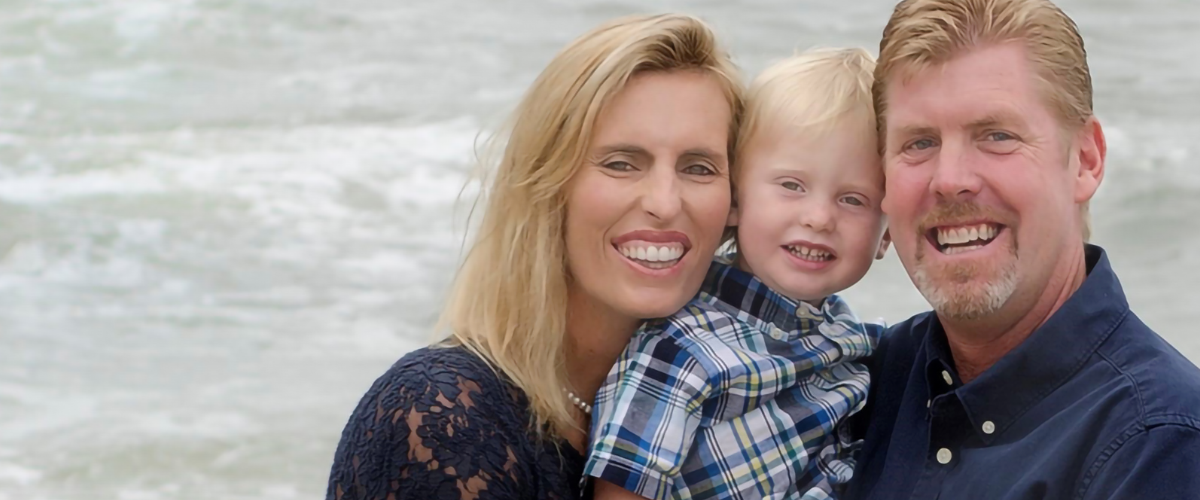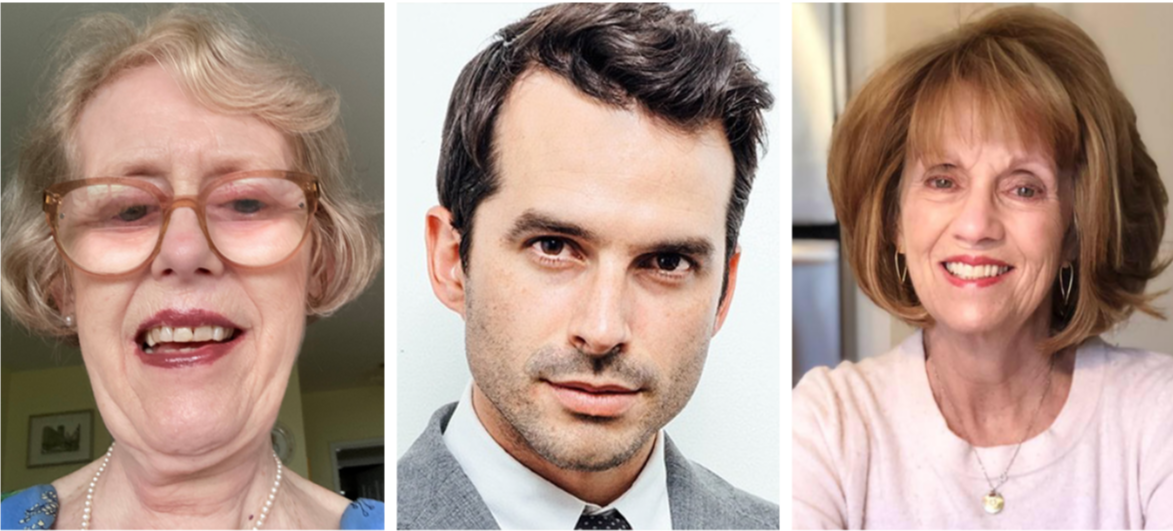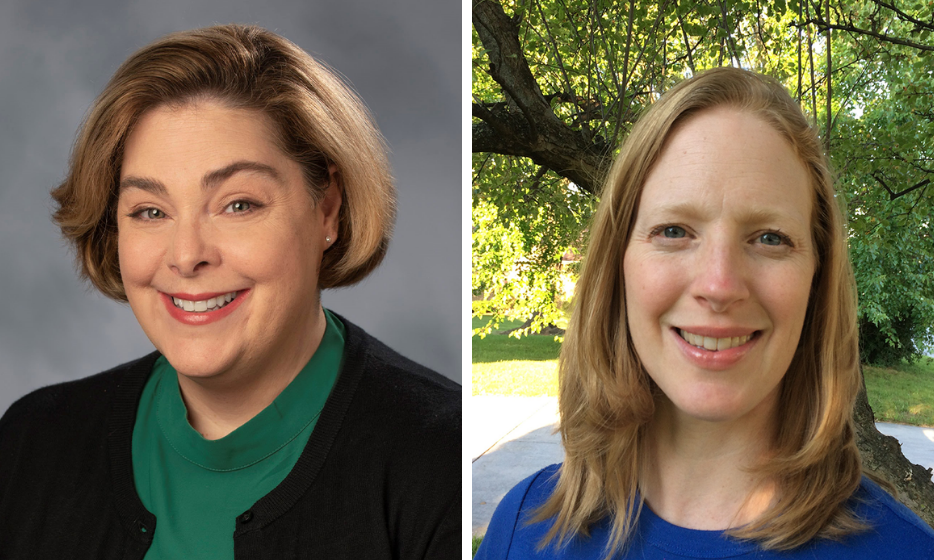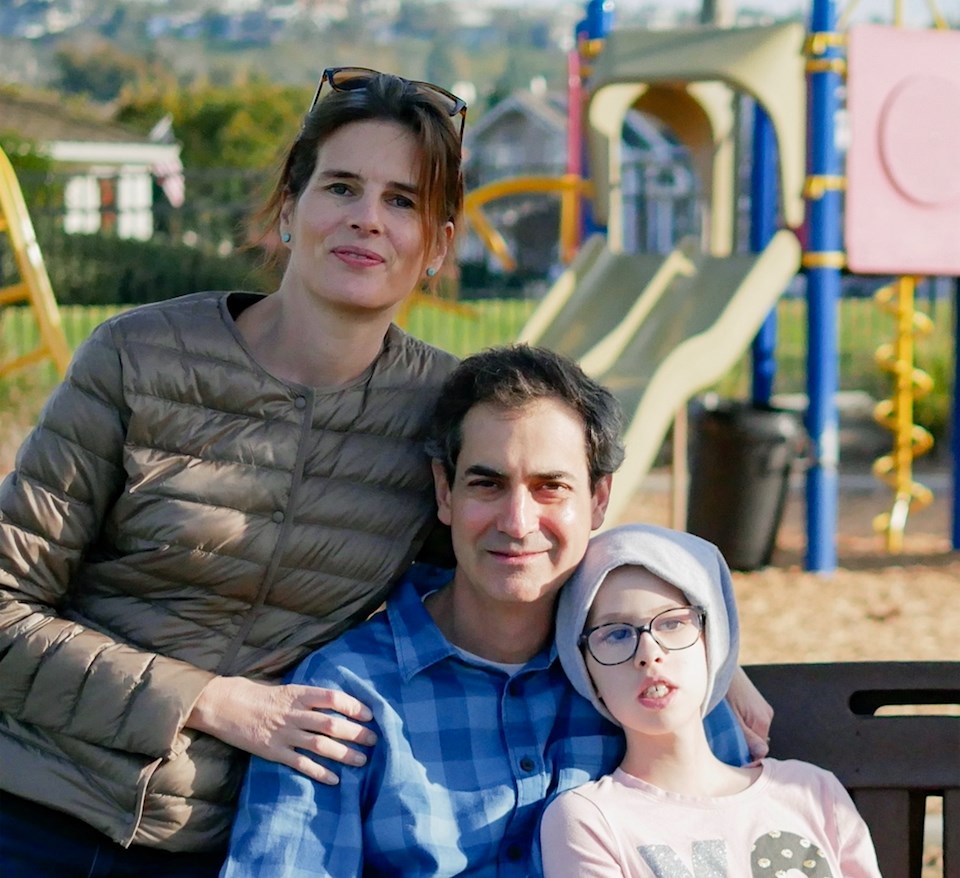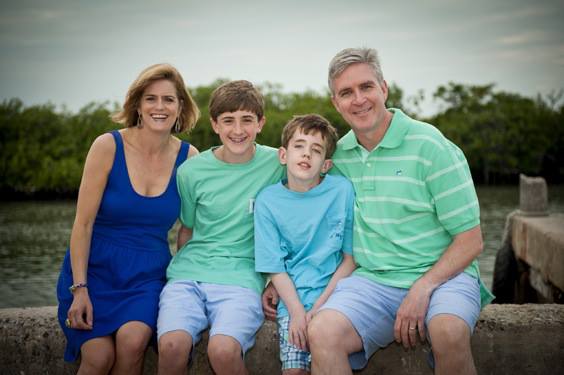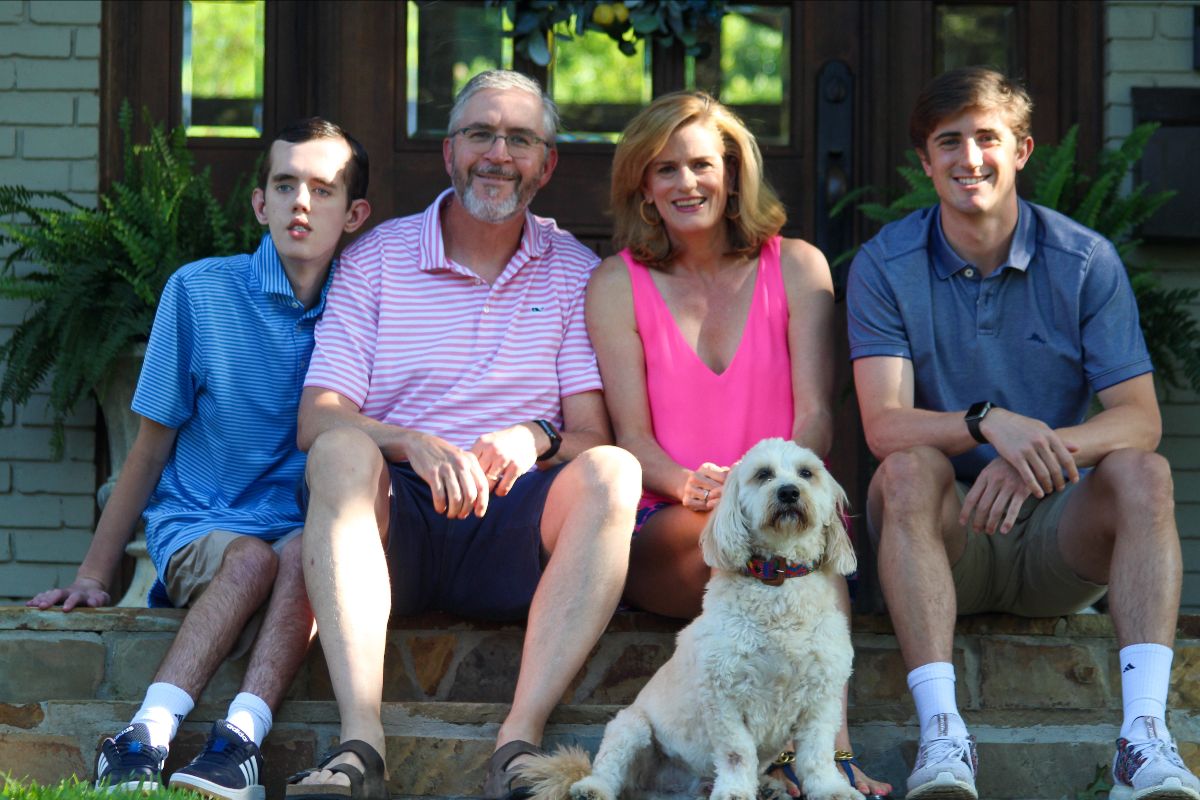In Remembrance of Dad: Reynold Wantseng Wang
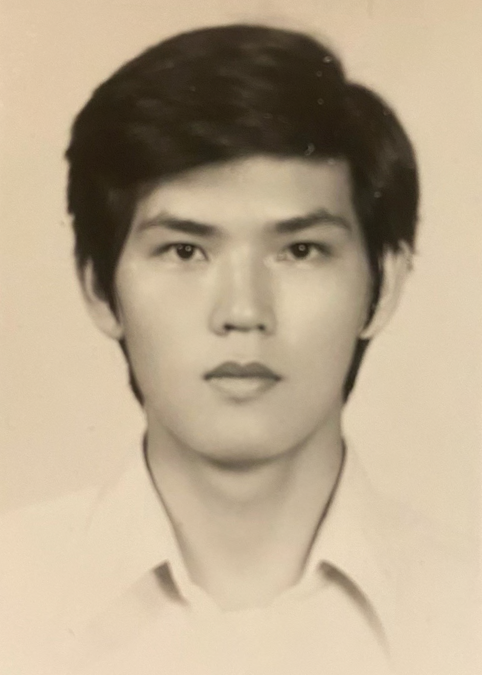
親愛的爸爸
In
Remembrance
of Dad
王望塵 - Reynold Wantseng Wang
February 17, 1953 - January 8, 2023
Written by his son, Eric Tzy-Shi Wang (王滋熙)
The actual events actually closely mirrored how I imagined it might happen. I was about as far away as earthly possible – halfway around the world, on a surf trip with college friends in the South Pacific. Not yet having adjusted to the new time zone (17 hours ahead of the East Coast), I was wide awake and had received an urgent text message at 4:57 AM from my mom. It was mid-day in Pennsylvania, and she was with my dad at the hospital. Where I was, it was still dark, and I had just gone to get some coffee and toast. I recall the soft yellow glow of night lamps and the ebbing and flowing of gentle waves onto the shore of our tiny island. Over the next 20 minutes, through a garbled discussion with doctors via my mom’s speakerphone, I would learn that my dad’s heart had stopped earlier at home. They had tried to resuscitate him in the ambulance but to no avail. It was a shock – I had just seen him a little over a week ago, over the winter holiday break; he was on his way to celebrating his 70th birthday in a little over a month.
The salty humid air enveloped my body as this news sank in. I did my best to maintain my composure as my friends milled about, getting ready for the first surf boat out at 5:30. My mind went in a hundred different directions. I remembered times with my dad from my childhood, when he taught me how to play basketball; I vividly recall one instance in which he had let me win, pumping up my ego to believe that my skills had bested his, despite measuring a whole 4 feet 2 inches. I remember playing catch with him using a real baseball for the first time, and the unfortunate black eye I got from misjudging one of his tosses with my new baseball glove. I remember his encouragement to just “go for it” after taking the training wheels off my bike earlier than any of my friends on our street – he helped me get up after every crash, and proudly watched me do figure eights in front of our house by the end of the day. As these memories replayed in my head like old movies, I sank into feelings of gentleness, kindness, wisdom, and calmness that my dad carried with him everywhere he went. I could feel the kisses and raspberries he used to lay on me and my younger brother, Thomas, as kids, teasing us before bedtime, providing a blueprint for my own interactions with my 2 year old son. At the same time, the underlying sadness I carried about my dad’s health condition – a longstanding struggle with myotonic dystrophy (dystrophia myotonica, DM), reached its lowest point – I would never be able to speak to him, hug him, or hold his hand again. Twinges of guilt and failure also stabbed me – I had the distinct feeling that I had missed an important deadline – that the scorecard had come back, and I had been unable to complete my assignment by the due date.
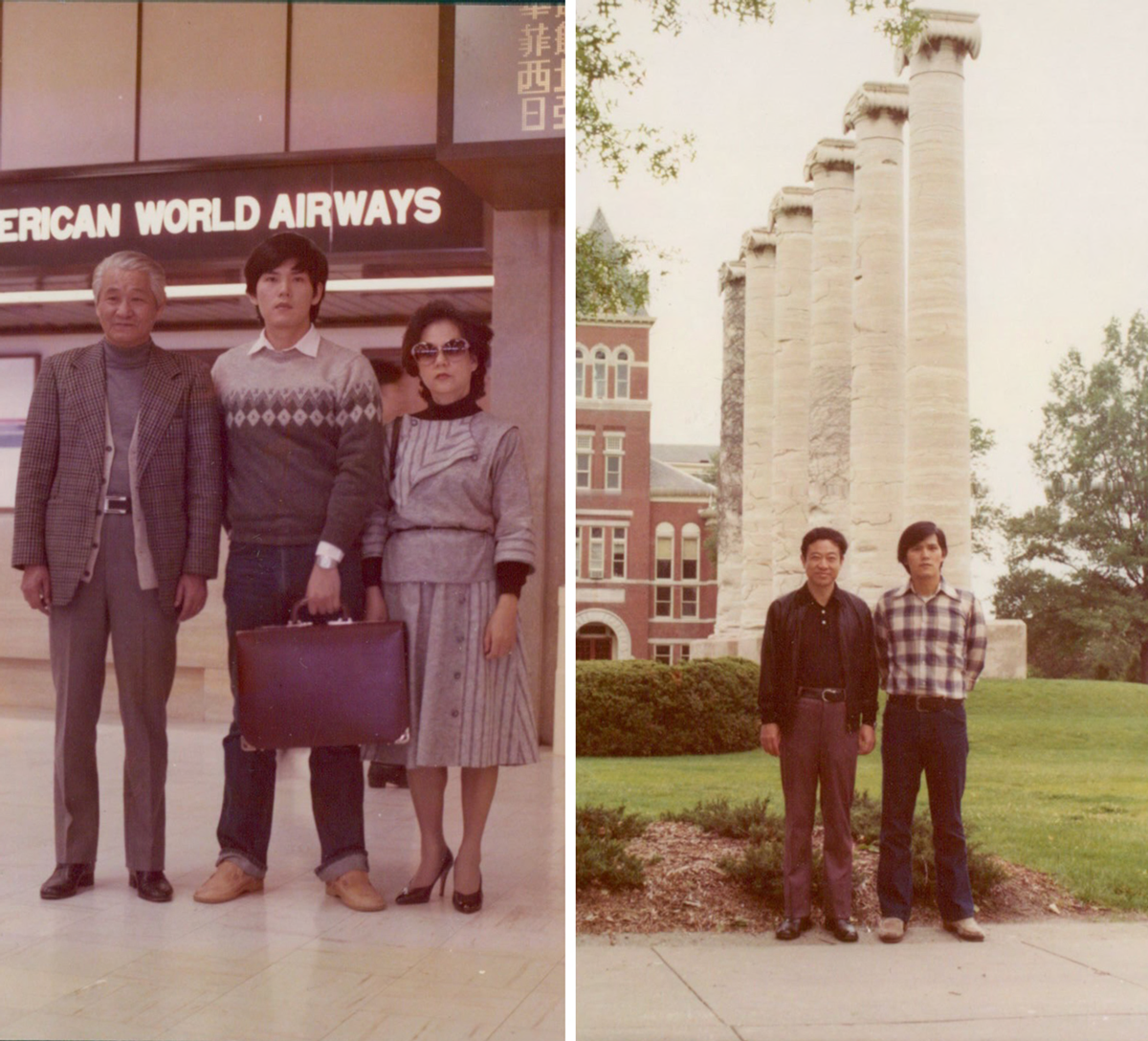
Left: Dad with his parents in Taipei Songshan Airport in 1983. Right: Dad with my mom's uncle at the University of Missouri, Columbia campus in 1979.
My dad had lived with symptoms of DM for over 30 years. His muscles had gotten extremely weak to the point where he required assistance to move around the house, eat, and function on a daily basis. He could not lift his arms high enough to bring utensils to his lips and was non-ambulatory. In 2015, he had gotten a pacemaker and implantable cardioverter defibrillator, since his heart beat as few as 28 times per minute, and he was at risk of sudden death due to heart rhythm disturbances (typical in DM). He was diagnosed when I was eight years old, and over the years, I watched him lose the ability to do many of the activities we did together when I was a child. After college, with the encouragement of friends and colleagues, I decided to defer my medical school acceptance to instead pursue a research career. My mom later told me that she was very nervous about my decision, since most researchers she knew had a lot of trouble getting their experiments to work (my experience is actually no different – research is difficult!); but my dad supported it, saying that it was important that I pursue something for which I was truly passionate. I decided to focus my training and career on better understanding molecular mechanisms of DM, and it had always been an ambitious goal of mine to find a medicine for my dad. Thus, my dad’s journey ultimately served as a guidepost and motivating factor for my life’s work. I have publicly written and spoken about his story in multiple forums1,2,3, and he always encouraged me to use his story to help others in the myotonic dystrophy community. As a young PhD student, I attacked my research, sometimes with reckless abandon; I was initially quite naïve about all the steps required to develop medicines. As I built my own lab, worked with drug companies, and learned about the clinical trial process, I came to realize that many key events and milestones would not be in my control, and that there would be a limit to how quickly we could learn and control basic principles of biology and physics. In recent years, I gradually admitted to myself that treatments, including experimental ones, might not be in the cards for my dad. Feelings of self-doubt still plague me frequently; I daily question how I spend my time – our most precious, non-renewable resource. I ask myself many “What ifs” and struggle with how much energy to focus on translational research rather than basic foundational science4. Although prudence, thoughtfulness, and wisdom are touted as benefits of maturation, at times I wish for the naïveté displayed by new students who might move quickly and act impulsively, lacking baggage to trip over or carry. However, in the past few days, I have been comforted to learn that my dad felt that even if he would never see treatments for himself, that younger generations living with DM should certainly stand to benefit, and that I should continue to persevere and not give up.

Top: Dad's college basketball team (top row, 2nd from the left). Bottom: Dad throwing the javelin.
My dad was born on February 17, 1953, in Taichung, Taiwan, the 2nd of 5 boys. His father was a businessman and government official in China, and he left for Taiwan in 1949 during the exodus of the Kuomintang. My grandfather loved chess (I still remember chess with 爺爺 – yéye), travel, and calligraphy. My grandmother had worked for a bank prior to having children and liked to play the piano, cook, and sew. My dad loved his brothers and family – he would reminisce about how the five brothers would jaunt around the neighborhood in dramatic and somewhat intimidating display – all of them (including my grandfather) were nearly 6 feet tall or taller and very handsome. One of my dad’s college roommates reached out this week to recount his visit to my dad’s home – he noted that the bathroom mirrors were all much too high for him, given the height of all the males in the family – only my grandmother had a separate mirror, hung at a “reasonable” height. My dad developed a great love for music and sports during his childhood. He never had a formal piano teacher, but taught himself, and also taught himself how to play the guitar. He loved classical music and The Beatles, The Carpenters, Simon & Garfunkel, the BeeGees, and Engelbert Humperdinck; college friends described his ability to discern and understand English song lyrics much better than anyone else, displaying these skills by singing full sets of Beatles’ songs while playing the piano. In the US, my dad was the conductor of the local Overseas Chinese American chorus while I was in elementary school. My dad fully instilled a love of music into his sons and supported our training; I learned to play violin and seriously considered a music career, and my brother learned to play the piano. He would bring novels to read during our weekly or twice-weekly lessons, and there was a period of time in high school during which he took us to concerts performed by world-renowned musicians on a monthly basis. My dad also spent much of his childhood and college years playing basketball and generally enjoying the outdoors; this foreshadowed my own experiences with him when I was a child, but unfortunately it became more and more difficult for him to participate as time went on.

Top left: Mom and Dad at the Lake of the Ozarks. Top right: On the campus of University of Missouri. Bottom left: Overseas Chinese Association Gala. Bottom right: At the Great Wall of China.
My dad majored in Physics at National Tsing Hua University - a highly competitive, math and science-oriented school that accommodated only ~45 individuals per class. Many of his classmates have stayed in touch over the years, and two of them had visited him in recent years. Memories of my dad have been flooding into my mom’s phone this week, and it gave me great joy to think about the deep connections he had formed and maintained over the years. I drew parallels to my own situation – the day of my dad’s passing, I told my friends of the news. They could tell that something was amiss and wrapped themselves around me physically and emotionally. As the child of immigrants and despite my parents’ best efforts – my childhood was peppered with feelings of “otherness” – and a difficulty in believing that others might truly accept me. I will never forget my departure from the island as they walked me to the boat and waved goodbye, and the feeling that I was genuinely supported, accepted, and loved. Over the past few days, I have been happy to learn that through the very end, my dad was also surrounded by love and support from far reaches of the world. There were silly stories of how his classmates chose him to be a goalkeeper for the soccer team, since he was extremely tall (they used the phrase 玉樹臨風) in comparison to everyone else. Initially they were completely disorganized, with people running every which way and kicking the ball with no rhyme or reason, and my dad didn’t want to play this position. But after a while, with dad’s help to coach everyone, starting from the bottom, they started winning many games, and eventually started beating teams from other colleges. There were additional common themes in messages to my mom:
“Reynold was the most talented, well-rounded individual - he was good at basketball, guitar, piano, and looked like a Chinese Elvis Presley - it was an honor to be his classmate.”
“We will always remember Reynold as a tall, strong, handsome man. He lived a full life, and although he suffered greatly through his illness, great meaning resulted, by inspiring others to pursue research for muscle disease.”

Top left: Paris, 1984. Top right: About 2 weeks after Thomas was born (late 1984). Bottom left: Taroko Gorge, Taiwan, 2009. Bottom right: Pennsylvania, 2019.
My dad met my mom in graduate school, at the University of Missouri, Columbia. They first met through the Chinese Students’ Association – my dad was the president, and my mom was the treasurer. My dad later went to my mom’s dorm to knock on her door; she answered and said “Oh, are you looking for so-and-so?” and my dad said, “No, I’m looking for you!” They often visited the local pizza shop, played bridge together, attended concerts, went fishing in Lake of the Ozarks (one time they caught 11 big bass!), and eventually got married. This week, one of their close friends from graduate school shared that my dad had said that “In the next life, [he] would still choose to marry my mom”, and that my mom joked back, “But are you sure I would say yes again?!” In addition to being my dad’s companion and best friend, my mom eventually became his sole caregiver. She was able to manage many of his health issues on her own, with support from me and my brother from a distance, but it was not without challenges. After my dad unexpectedly tumbled down the stairs, they installed a stair lift. To get up and down from chairs, they followed a precise series of steps and weight transfers – perhaps an unexpected adaptation of my parents’ dancing skills (my dad was famous for teaching his classmates how to dance). Nurses in hospitals marveled at the system they had established to be able to get him around the house with minimal strength/force; my mom was only about 5 feet tall and at least 80 pounds lighter than my dad. They pursued innovative solutions, working with a local mechanical engineer to build a custom motorized actuator that allowed my dad’s favorite armchair to rise and fall; off-the-shelf motorized recliners did not work well and would cause him to get thrown onto the ground. They renovated their bathroom and shower to allow for easy transfers from a wheelchair onto a shower bench, and had custom tile work done to display the 福 character (“fortune”, or “good luck”) prominently on the wall, using a variety of styles from different Chinese dynasties – this word is also a homonym for 扶 (“support” or “hold on”), and so this word has a double meaning to hold onto to the grab bars and not fall. They traveled around the world with their family – visiting the Great Wall of China, Hawaii, Taiwan, and all over the United States – and never let my dad’s different abilities prevent them from fully experiencing life. My mom took great care of my dad and made his health her top priority; but my dad never wanted to place undue burden onto her or any of his children. Although his wishes were to never live anywhere other than his own home, such as an assisted living facility, he planned carefully with my mom to ensure that his eventual passing would be smooth and seamless. Through the very end, my parents together never stopped pursuing new solutions to keep my dad as functional and comfortable as possible – even inventing them if they did not exist – and my dad participated in these decisions while also prioritizing the well-being of the rest of his family.

Top left: Hawaii with my wife, parents, and brother in 2012. Top right At the Great Wall of China in 2016. Bottom left: My parents with dad's college friends Ming, Angie, and Chung-Fu at home in 2017. Bottom right: Dad with my son in 2022.
My dad earned his PhD in 1983 in physics; his thesis was entitled Neutron Scattering Study of Two Dimensional Films. I owe much of my interest in science and problem solving to him. I remember long car rides during which we would explore questions in depth – in an inversion of the typical parent-child pattern, he would be the one to encourage me to ask “Why?” in response to every subsequent answer. I remember him helping me come up with ideas for science fair projects. In 7th grade, I sought to measure the refraction indices of differently colored light (e.g. measure the impact of wavelength) in different liquids (e.g. measure the impact of density by dissolving sugar). He coached me to start my presentations by defining and asking a specific question – this lesson recurs for me over and over in my life as a scientist, and it is something I try to teach my own students in the lab. As I reflect on my own academic career, I realize that my scientific approach and philosophy were likely indirectly shaped by my dad’s PhD advisor, Haskell Taub. My parents told me fond stories of how they felt that they had been adopted in this new country by Dr. Taub and his wife – welcomed into their home for memorable dinners and subjected to rigorous yet supportive training. One of my dad’s younger brothers would later also receive his PhD under the direction of Dr. Taub, a mutually sought-after arrangement, given the productive and warm relationship they had.
According to my mom, my dad displayed extreme calm under stress and pressure throughout his PhD – a quality he may have passed on to me as well. In 5th grade, I remember competing in our school’s Science Olympiad – teams of 4 were tasked with building a balsa wood structure to withstand as much weight as possible. Our structure held 25 pounds, but I believe the winner held at least 50 pounds, demolishing our performance. I was upset not only about the outcome, but because I also felt that towards the end of our group project, many of my team members had deserted and not fully pulled their weight. This was one in a long series of endeavors in which I burst into tears and react excessively negatively to an upsetting experience. I vividly remember my dad telling me to “be cool and stay calm.” He drilled this into my head repeatedly, and today, I am characterized by friends and co-workers as being exceedingly unflappable in the face of stress. Someone could be aggressively screaming at me to my face, and I might look at them calmly and respond in an annoyingly rational, objective fashion. In the face of progressively declining health, my dad always maintained a positive attitude - he always remained calm and collected. While he may have been distraught inside, he remained our rock and gave us hope throughout all his challenges.

Clockwise, from top left: Dad thinking about a physics problem, Dad in a Beatles hair phase, 2 pictures of the deck he built, and the bridge that I built at my parents' house.
There are so many more things my dad did for me that I appreciate, and what I write here is only limited by the time I have set aside in these past few days to recall these memories. My dad was a capable woodworker – together with one of his brothers, he dug post holes for a 600 square foot deck behind our house, and then single-handedly built the entire structure. He taught me how to work with wood and power tools, and I later used those skills to build a bridge and pond at my parents’ house, the stairs in my own house, various pieces of furniture such as a kitchen nook/bench, and numerous desks and bookshelves. When my brother, Thomas, and I were young and my parents were in the initial stages of raising a family, my dad would always forgo new shoes, clothes, and other necessities – he would tell my mom to spend the money on his sons. One of the symptoms of DM is to have trouble waking up in the morning due to extreme fatigue. However, for quite a long stretch of time in middle school – in response to a comment from my brother and me that we would get hungry during the day – he woke up every morning to make us a hot breakfast. He gave the most wonderful speech at the rehearsal dinner at my wedding – my college friends to this day remember this speech in which he described how it was not an easy task to raise children well, but that he had great pride in me as a son, and that he was overjoyed to now have a daughter to spoil and love as his own. My dad was a true romantic at heart and loved the feelings of connection and love elicited by endings of sappy movies. He s pent many of his recent years reminiscing about old friends and old times and imagining the adventures of his children around the world. During the holidays, he would wait for us to return home with great anticipation, reminding my mom to be prepared with our favorite foods. As there is never enough time with loved ones, I wish I could have visited or communicated more over the past few years. Ever since starting my own lab, I fully immersed myself in research, and was not always as present as I would have liked – but I am comforted by the fact that we held a shared understanding and a deep unspoken love for one another.

Top left: Dad's custom built chair with a linear actuator.Bottom left: Close-up of the lift mechanism. Top right: 福 character (“fortune”, or “good luck”) in my parents' driveway. Bottom right: 福 character on shower tiles.
My dad has been a physical and symbolic beacon for my life’s work and the work of many others. When I entered this research field in 2006, molecular therapies were not yet on the horizon. However, over the past 15 years, a great deal of progress has been made in DM and other related diseases, and transformative therapies and entire therapeutic modalities are maturing. Clinical trials have now begun for DM, and the most recent results have been quite encouraging. My dad always taught me to form a broad vision – to look far into the distance and take a long view on big problems. What will this disease look like in the context of these new interventions? While most of them are targeted at alleviating muscle symptoms, they may not address disease symptoms in the brain, which can also be profoundly affected.
My purpose has gradually evolved over time, even more so in recent years, given significant advances in the drug development landscape. When I was home just a few weeks ago, my parents asked me how quickly medicines might be available, given recent encouraging clinical trial results. I said that it could still be a few years, since my dad’s advanced age would likely make him ineligible for any ongoing trials, and that several phases would still need to be completed. My parents generally tempered their expectations regarding these topics to avoid disappointment or unreasonable expectations, but this time, they displayed some feelings of surprise and resignation. During this visit, my dad seemed to have declined more rapidly than usual since the last one, and I could tell that he was tired. When we left, I made a point to say that we’d visit again soon in the spring, fearing further impending decline. Mentally and emotionally, I had already periodically grieved over the years, every time I realized he could no longer perform a certain function or participate in a certain way. For me, his passing punctuated a slow, unrelenting march of deterioration. The nagging feeling that we were too slow to provide treatments for my dad will never go away, but my mission has never been limited to helping just my immediate family. Because of my dad’s experience, I have met countless families with similar journeys (with DM and other diseases), and in line with my dad’s wishes, I will continue to carry out my own research and support others by being with them and learning about their experiences. Our community is now so close to seeing the benefits of years of research, and one of the best ways to honor and remember my dad and others who lived with DM is to fully close the loop, ensuring that treatments are available to all who seek them.

Top left: Dad checking the waves with me when I was in high school. Top right: Dad playing in the water in college. Bottom: One of the waves from my recent surf trip, the day before my dad passed. (Credit: Scott Winer)
We tell stories to make meaning of disparate events in our lives. We cobble together narratives to emphasize certain points or lessons we wish to share with others. The events leading up to my dad’s passing and my journey back from the South Pacific were littered with symbols seemingly connected to my dad. Just before he died (while I was away), a tree had been struck by lightning at my house in Florida – in the exact location we were considering putting a guest house for my parents and other visitors. My laptop computer unexpectedly stopped working, according to the last successful ping by Find My Mac, at 7:33 am the day he passed – it was as though my dad was telling me to take a break from work. In PA a few days after he passed, the local classical music radio station played Recuerdos del Alhambra by Francisco Tarrega – a piece my dad had mastered on the guitar; and also Rondo in C, K373 by Mozart – one of the first “non-Suzuki” violin pieces I learned. Other incidents reminded me of my parents’ relationship with each other. I had read David Chang’s memoir, Eat a Peach, on the plane ride, in which he discussed the yin and yang of cooking flavors – certain dishes only work because one component is too salty, and the other is too bland – in combination, they provide a perfect balance, but cannot exist on their own. A similar concept of yin and yang was described by Gerry Lopez in a Patagonia surf documentary I watched on the plane ride home – he described finding freedom in being calm, still, and at peace while riding incredibly turbulent and dangerous waves. These reminded me of the yin and yang of my mom and dad – my dad’s incredibly calm, steady presence and my mom’s excitable, frenetic energy (from whom I have learned how to act quickly) – both incredibly positive, supportive, and nurturing in their own way, but each enhanced by the other. The whole way back home, I wondered how this balance would now change. What I have now realized over the past week is that the balance my dad brought to our lives has only become more permanent and lasting with his passing. We have found ourselves thinking about all the things my dad would have wanted and stood for and have now acted upon them with more alacrity and respect than we might have when he was alive. As I watch my own son learn and grow, I will always think about my own relationship with my dad, and as strange as it may seem, to trust that my relationship with my dad will keep evolving over time. Many friends have reached out to let me know that my dad will always be with me, and that he will keep teaching me and showing me the way.
We love you so much, Dad – you touched so many people through the way you lived your life, and your lessons will never be forgotten – rest in peace.
定風波
莫聽穿林打葉聲, 何妨吟嘯且徐行。
竹杖芒鞋輕勝馬,誰怕? 一蓑煙雨任平生。
料峭春風吹酒醒,微冷, 山頭斜照卻相迎。
回首向來蕭瑟處,歸去, 也無風雨也無晴。
A poem by 蘇軾 (Su Shi, 1037-1101, Northern Song Dynasty)
Used by his college friend, 劉慶聰, to remember Reynold
Translation by Frank C. Yue:
“Calming the Winds and Waves”
Drumming forest leaves, listen not to the rain’s striking song;
Just chant, sing verses, howl and ramble leisurely along.
A pair of straw-sandals, a bamboo cane –
Lighter, better than a horse (with flowing mane).
Why fear?
With straw-cape and straw-hat, through mist and rain,
I'll walk life’s journeys again, and again.
It is Spring but blowing are the winds chill,
My drunkenness is gone, blowing until.
It’s cold –
The Sun, atop the hills, shines slantingly
(In spite of everything), to greet me.
Looking back at where all that had been
And where the dark, the winds and rains begin,
I'll go home –
Non-sentimentally (with a grin),
Now there’s no more wind, rain or shine therein.
MDF is Commited to Improving the Lives of All People Living with Myotonic Dystrophy.
Help change the future of myotonic dystrophy care, research, and support with a contribution to MDF in honor of 王望塵 - Reynold Wantseng Wang. Donate to Community, Care, and a Cure today!
Donate in honor of Reynold Wantseng Wang!
References:
1. A World Without DM
2. Why I Chose DM Research (Or Why DM Research Chose Me).
3. This geneticist’s goal: Cure the disease that runs in his family
4. Wang, E.T. Goals in tension: motivated by genetic disease yet rooted in basic science. Nat Rev Mol Cell Biol 22, 581–582 (2021). https://doi.org/10.1038/s41580-021-00395-1

